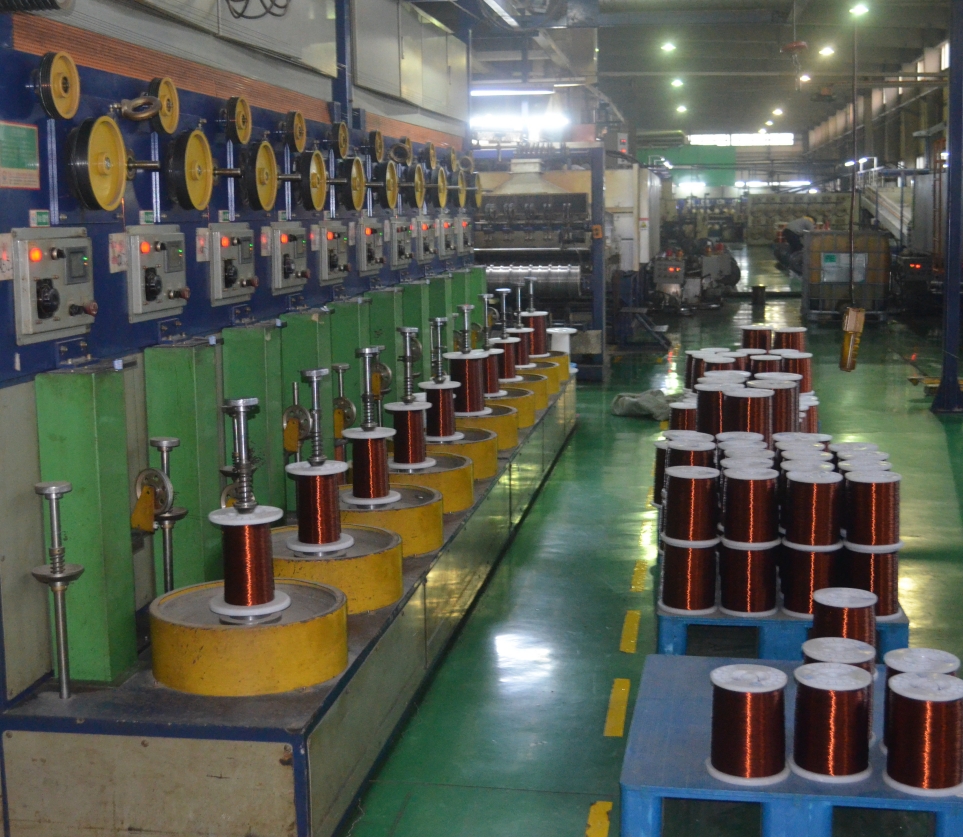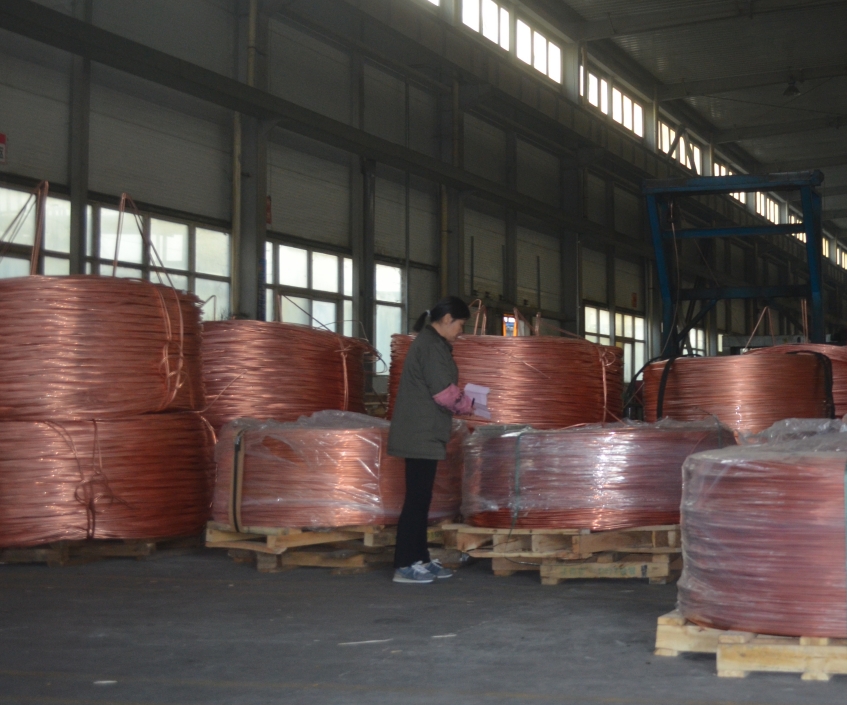1.The function of enameled wire
Enameled wire is a wire with insulating paint coated on the surface of a metal conductor. This insulating paint is often a thin coating. For metal wires, this layer of insulating paint has multiple functions, including:
Electrical insulation: One of the main functions of enameled wire is to provide electrical insulation. Metal wires coated with insulating paint can effectively prevent current from short-circuiting between wires or with external media, ensuring the normal transmission of electrical signals or electrical energy.
Corrosion resistance and insulation: Insulating paint can protect metal wires from oxidation, corrosion and other effects in the environment. This is important to extend the life of the wire and maintain its performance.
Improve the mechanical strength of the wire: The insulating paint layer can improve the mechanical strength of the wire and prevent the wire from being bent or damaged during use.
Reduce current loss: The insulating paint layer can reduce the resistance on the surface of the metal wire, thereby reducing current loss. This is crucial for efficiency in high-frequency signal transmission and power transmission.
Ease of cutting and joining: The insulating layer of enameled wire generally makes it easier to cut, join and terminate, which is very important in the manufacturing and maintenance of electrical and electronic equipment.
Protect the wire surface: The insulating paint layer can prevent the wire surface from being polluted by moisture, dust, etc., and keep the wire surface clean and well conductive.
Generally speaking, enameled wire is widely used in the electrical and electronic fields, providing the necessary insulation and protection for wires, ensuring the safe transmission of current and the normal operation of equipment.

2. How to choose enameled wire
Choosing good quality enameled wire requires consideration of several factors, including materials, manufacturing processes, and product performance. Here are some suggestions:
Material quality:
Choose a reputable supplier or manufacturer and make sure they use high-quality metal conductors and insulating paint.
The conductor is usually made of high-quality copper or aluminum, and the insulating paint should be an insulating material that is resistant to high temperatures and corrosion.
Types of insulating paint:
Different applications require different types of insulating paint. For example, some applications may require an insulating paint that resists high temperatures, while other applications may require an insulating paint that resists corrosion. Make sure the enameled wire you choose meets the requirements of your specific application.
Wire diameter and gauge:
Select the correct wire diameter and gauge based on specific needs. Different applications may require different sizes of enameled wire, so make sure the size you choose meets your current load and power requirements.
Electrical properties:
Consider the electrical properties of the enameled wire, such as electrical resistance, insulation resistance and dielectric strength. These properties directly affect the performance of enameled wire in specific applications.
Manufacturing process:
Understand the manufacturer’s manufacturing process and quality control system. Good quality enameled wire usually comes from manufacturers with extensive experience and high-level production standards.

Standards compliant:
Make sure that the enameled wire you choose complies with relevant international or industry standards, such as IEC (International Electrotechnical Commission) standards or other regional wire and cable standards.
Brand reputation:
Choose a brand with a good reputation and experience. Brand reputation is often an important indicator of product quality.
Performance certification:
Check the product’s performance certifications, such as UL (Underwriters Laboratories) certification or other regional certifications. Certification provides additional assurance of product performance and quality.
client feedback:
Check out other customer feedback and reviews to see how enameled wire performs in real-world applications.
By considering these factors together, you can be more confident in selecting quality enameled wire to meet the needs of your specific application and ensure system reliability.

Tags:
Enameled Wire Copper wire Aluminum wire Enamelled wire Aluminum Winding Wire Magnet wire Modified polyester Round copper wire Heat resistance Enameled aluminum wire